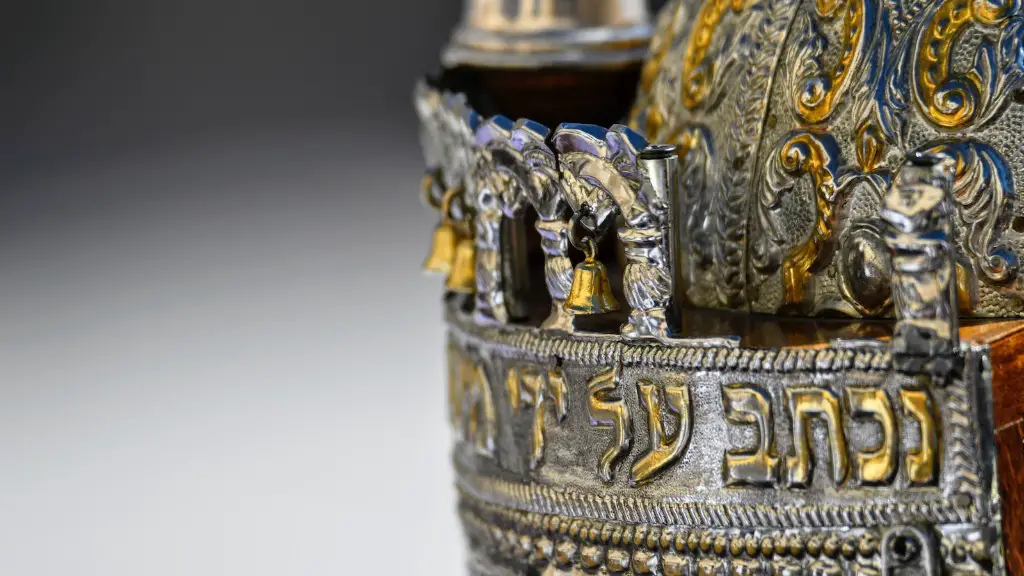Hindus believe in many gods, but the most popular and powerful of these is considered to be Lord Shiva. Shiva is a complex god known by many names and aspects, and he is often referred to as the Lord of the Three Worlds. Hindus believe that Shiva holds the highest spiritual position out of all the Hindu gods.
Shiva is mainly represented by the symbol of the lingam – a column-like object often found in Hindu temples. He is traditionally depicted with a third eye on his forehead – representing his wisdom and knowledge – and long matted locks, signifying his power and strength. Shiva is generally depicted as having four arms, and often carries a trident and drum.
Shiva is considered to be the most powerful of all Hindu gods because he is the destroyer of all that is wicked. He also represents transformation, as he is a god of both death and rebirth. In addition, Shiva is seen as a god of integrity and compassion, and his presence is often associated with tranquility and peace.
When it comes to deities in Hinduism, Shiva is not the only powerful god. Other gods like Vishnu, Brahma and Kali are all seen as powerful, but Shiva is considered to be the most powerful of them all. This can be seen in the fact that Shiva is often the focus of worship in Hindu ceremonies. He is also often referred to as Universal Consciousness – implying that he is seen as an all-encompassing divine being.
Legend says that Shiva is credited with creating the universe and is usually depicted as being all-knowing and all-powerful, with the ability to turn any bad situation into a good one. He is also popularly worshipped as the destroyer of evil, the defender of righteousness and the destroyer of ignorance and complacency.
Shiva is seen as a merciful and loving god who helps those in need, yet simultaneously inflicts pain and judgment for wrongdoing. His presence is thought to be a reminder of the presence of a higher order – of justice, mercy, and compassion. He is worshipped in many forms and has many different stories and legends associated with him.
There is also the belief that Shiva is beyond the comprehension of human limits and therefore his power is never completely grasped. He is the ultimate force that governs all energy in the universe and is the controller of time and destiny.
Symbology of Shiva
Shiva is represented by several iconic symbols which are recognised and worshipped across generations of Hindu worship. Examples of common symbols representing Shiva are the bull Nandi and the trident.
The bull Nandi, also referred to as the ‘Vahana’ of Shiva, is sometimes shown as sitting in front of Shiva’s image, or being ridden by him. The Nandi symbolises the power of Shiva and the will to conquer the world.The trident is another iconic symbol representing Shiva. It is associated with the concept of ‘Trimurti’, or ‘three forms’ and represents the three worlds: Satya-Loka (the world of truth), Tapa-Loka (the world of austerity) and Vita-Loka (the world of liberation). It is believed that this trident empowers Shiva to protect and sustain the three worlds.
Rituals and Temples Associated with Shiva
Hindus offer a number of rituals and prayers in honour of Shiva. These include regular worship, performing aarti, meditating on his image, memorising mantras and reciting hymns. The most important worship practices associated with Shiva are Shivrathri and Mahashivratri.These two festivals are celebrated with much fervour and devotion throughout India.
Shiva temples, also known as ‘lingams’, are present in almost all corners of India. Each temple is usually dedicated to a particular form of Shiva. The most famous and grand of these temples are the Saket, Omkareshwar and Kashi Vishwanath temples. During their visits to Shiva temples, pilgrims usually seek blessings for fertility, health, and wealth.
Shiva’s Place in History
Shiva is believed to have been revered even in ancient India. He is mentioned in the Rig Veda, one of the oldest known writings in Hinduism. He is also mentioned in the Upanishads, which are considered to be some of the most important spiritual texts in Hinduism. Shiva is also described in the Puranas – another ancient Hindu collection of stories, myths and texts.
Interpretations of Shiva
Interpretations of Shiva’s power vary across different Hindu sects. In some religions, Shiva is seen as a passionate, romantic and sexual god. In others, he is viewed as a more austere, meditative figure, focused on spiritual matters. Regardless, Shiva remains the most powerful and popular god in Hinduism, revered and worshipped all over the world.
Variations of Shiva
Shiva is known by many different names and incarnations, such as Mahadeva, Bhrahm, Rudra, and Pasupati. He is also depicted in many different forms such as Ardhanarishvara – a form combining male and female characteristics, Nataraja – the lord of dance, and Gajanana – an elephant-headed form.
Conclusion
Shiva is a complex and powerful deity in the Hindu religion and has been worshipped by Hindus all over the world for many centuries. He is believed to be omnipotent and omniscient, with the power to destroy evil and reward righteousness. He is often represented with a trident, a mythological symbol of strength and power, and is seen as the ultimate teacher and defender of truth. While there are many gods in Hinduism, Shiva is seen as the most powerful of them all.
